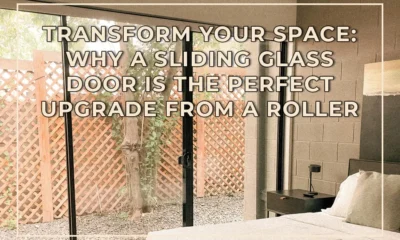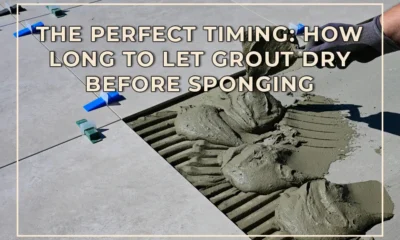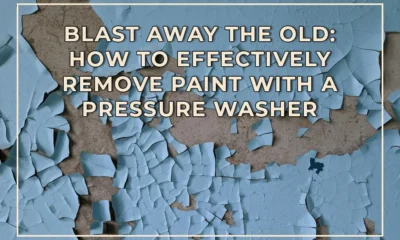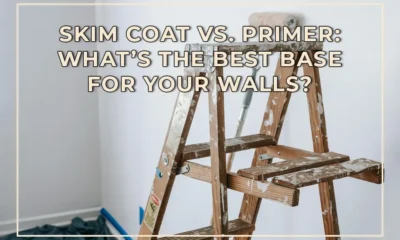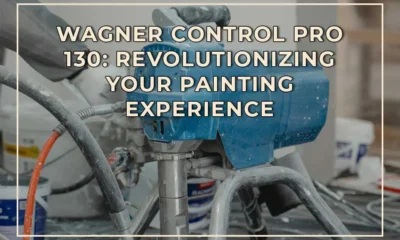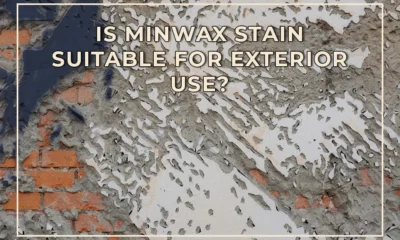DIY Closet
What Is a Dimpled Membrane and How Does It Protect Your Basement Floor?
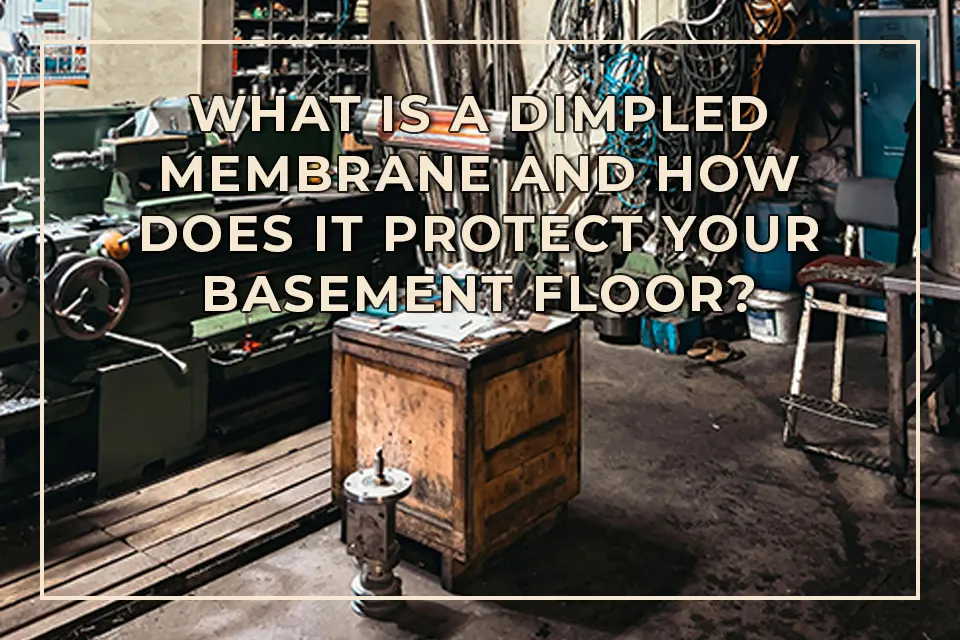
Dimpled membranes are innovative materials designed to protect your basement floor from moisture and other environmental factors. They act as a barrier that keeps your basement dry and maintains a healthy living space. This article will delve into what dimpled membranes are, how they work, their benefits, installation tips, and more.
What Is a Dimpled Membrane?
A dimpled membrane is a specialized drainage product made from high-density polyethylene (HDPE) or other durable materials. Its structure features raised dimples or nubs that create a separation between the membrane itself and the surface it is placed on, like your basement floor or foundation wall. This design promotes airflow and drainage, preventing water from accumulating in your basement.
The primary purpose of a dimpled membrane is to mitigate moisture problems, which can lead to mold growth, structural damage, and unpleasant odors. These membranes are particularly useful in regions prone to heavy rainfall or where groundwater levels are high. Overall, they serve as an essential component in any home improvement project focused on creating a dry and comfortable basement environment.
How Does a Dimpled Membrane Work?
Dimpled membranes are engineered to provide effective drainage and moisture protection. When water seeps into the ground, whether due to rainfall or melting snow, it often gets absorbed into your home’s foundation. The membrane’s dimples create a channel for this water to flow down to the drainage system, typically a sump pump or drainage tile, preventing pooling.
The space created by the raised dimples allows air to circulate, further reducing moisture levels. By promoting ventilation and drainage, dimpled membranes protect your home’s foundation and floor, reducing the risk of mold and other problems caused by excess humidity.
When installing a dimpled membrane, it’s crucial to ensure that the drainage system is connected properly to direct water away from your home. This combination of a dimpled membrane and an effective drainage solution can create a dry basement environment that is both safe and comfortable.
Benefits of Dimpled Membranes
1. Moisture Protection
One of the most significant advantages of dimpled membranes is their ability to protect your basement from moisture. By directing water away from your walls and floor, they help prevent water damage, which can lead to costly repairs over time. Keeping excess moisture at bay also reduces the risk of mold and mildew, promoting a healthier home environment.
2. Enhanced Comfort
A dry basement is not only healthier but also more comfortable. High humidity levels can cause discomfort and create an unwelcoming environment. Dimpled membranes help lower humidity levels, leading to a more pleasant basement space. This is particularly important if you plan to use your basement for recreational activities, storage, or even as a guest suite.
3. Improved Structural Integrity
Moisture can weaken a building’s structural integrity over time. By preventing water infiltration into your basement, dimpled membranes help maintain the integrity of your foundation. This protective barrier can prolong the life of your home and prevent the need for expensive repairs.
4. Cost-Effective Solution
Investing in a dimpled membrane system is often more affordable than dealing with water damage down the line. The cost of installing a dimpled membrane can be negligible compared to the expenses associated with flooding, mold remediation, or structural repairs. Moreover, these membranes are relatively easy to install for DIY enthusiasts, making them a budget-friendly home improvement option.
5. Versatile Applications
Dimpled membranes can be used in various applications beyond basements. They are also useful in crawl spaces, retaining walls, and even under concrete slabs. This versatility makes them an excellent choice for a range of construction and home improvement projects.
Installation of Dimpled Membranes
Installing a dimpled membrane might sound daunting, but it can be a manageable DIY project for those who are comfortable with basic home improvement tasks. Here’s a step-by-step guide on how to install one:
Step 1: Prepare the Area
Before you start, clear the area where you’ll be installing the membrane. Remove any debris, old flooring, or damaged insulation. Ensure that the surface is clean and smooth to guarantee a good bond.
Step 2: Check for Water Issues
Make sure to check for existing water issues in your basement. Before proceeding with the installation, ensure that you adequately address any leaks or sources of moisture. This step is essential for the long-term effectiveness of your membrane.
Step 3: Measure and Cut the Membrane
Once the area is prepared, measure the dimensions of the space you’ll be covering. Use a utility knife to cut the dimpled membrane to fit your measurements, making sure to allow some overlap at seams for a watertight fit.
Step 4: Install the Membrane
Begin placing the membrane in position, ensuring that the dimples are facing outward. Secure it in place using adhesive or fasteners, depending on the manufacturer’s recommendations. Ensure that there are no gaps or spaces that could allow water to seep in.
Step 5: Connect to the Drainage System
If your drainage system is in place, ensure that the dimpled membrane is connected correctly. This will allow water to flow away from your foundation and prevent pooling around the walls.
Step 6: Seal the Edges
Finally, seal the edges of the membrane to enhance its water-resistant properties. Use a high-quality waterproof sealant to ensure that the area is watertight.
Maintenance of Dimpled Membranes
After installation, keeping your dimpled membrane system in good condition is essential. Regularly check for any signs of wear or damage, especially after heavy rains. Look for cracks, tears, or areas of pooling water and address them promptly to maintain the effectiveness of your moisture barrier.
If your drainage system is connected, make sure it is functioning correctly. Clean any clogged drains or sump pumps regularly to avoid water buildup.
Conclusion
Dimpled membranes provide an effective solution for protecting your basement floor from moisture and its related problems. Their unique design and functionality help ensure that your basement remains dry and comfortable, thereby improving overall home health. With their numerous benefits, ease of installation, and affordability, dimpled membranes are a wise investment for anyone looking to improve their home.
By incorporating a dimpled membrane into your basement waterproofing strategy, you are not only protecting your property but also creating a healthier living environment for you and your family. Given their versatility, these membranes can be utilized in various applications, making them a valuable addition to any home improvement project.
FAQs
- 1. Can I install a dimpled membrane myself, or should I hire a professional?
- Yes, many homeowners can successfully install a dimpled membrane as a DIY project, given that they are comfortable with basic tools and home improvement tasks. However, if you feel uncertain, hiring a professional can ensure proper installation.
- 2. How long do dimpled membranes last?
- Dimpled membranes made from high-density polyethylene are designed to be durable and can last for decades when installed correctly. Regular maintenance will help extend their lifespan.
- 3. What if my basement has a history of flooding?
- If your basement has a history of flooding, it may be advisable to consult a professional to evaluate the situation comprehensively. In such cases, additional waterproofing measures might be necessary alongside the installation of a dimpled membrane.
- 4. Can dimpled membranes be used in crawl spaces?
- Yes, dimpled membranes are effective in crawl spaces as well. They provide moisture control and help to improve air quality in these often neglected areas.
- 5. How do I know if my dimpled membrane is working properly?
- Periodically check for signs of water intrusion and examine the membrane for damage or wear. Additionally, monitor the humidity levels in your basement; significant changes may indicate issues with your moisture control system.
DIY Closet
Transform Your Space: Why a Sliding Glass Door is the Perfect Upgrade from a Roller Door
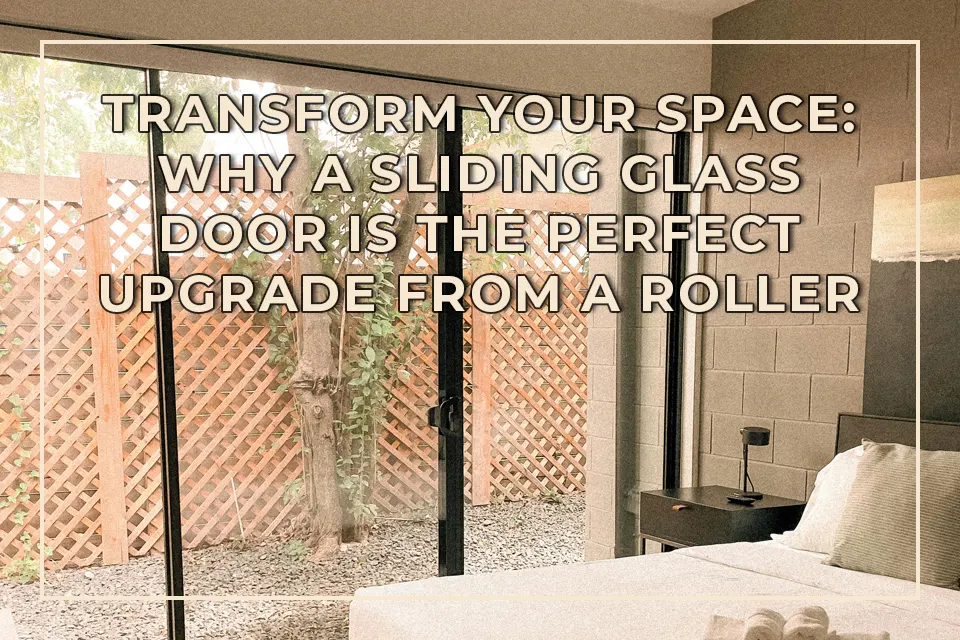
Introduction to Replacing Roller Doors with Sliding Glass Doors
When it comes to enhancing your home’s aesthetic and functionality, one of the most transformative changes you can make is replacing your old roller door with a sliding glass door. Roller doors, often found in garages and commercial spaces, offer convenience and security but can sometimes be bulky and unattractive. On the other hand, sliding glass doors provide a contemporary look while allowing natural light to flood into your spaces. In this comprehensive guide, we’ll delve into the importance and benefits of switching from a roller door to a sliding glass door, provide a step-by-step guide on how to make the transition, offer insider tips, address common mistakes, and answer your frequently asked questions.
The Importance of Choosing the Right Door
Choosing the right door for your home is more than just a matter of aesthetics; it is crucial for functionality, security, and energy efficiency. In many households, the door serves as the primary entry and exit point, making it essential to select a type that balances style with performance. Roller doors, while effective for security and ease of operation, often fail to make a pleasing architectural statement. By opting for a sliding glass door, homeowners can effectively merge beauty with practicality.
Sliding glass doors not only improve the visual appeal of your space but can also enhance the overall ambiance of your home. They enable a seamless transition between indoor and outdoor areas, making your living spaces feel larger and more open. In essence, the right choice of door is foundational to creating a home that reflects your style and meets your daily needs.
Benefits of Replacing Roller Doors with Sliding Glass Doors
Enhanced Aesthetic Appeal
First and foremost, sliding glass doors introduce elegance and modernity to both the interior and exterior of your home. With an array of designs to choose from, homeowners can pick doors that complement their décor and improve curb appeal. This upgrade can significantly increase your property’s overall value.
Improved Natural Light
Sliding glass doors can flood your living area with natural light, creating a welcoming atmosphere. Natural light is known to enhance mood and overall well-being, making your home a more pleasant place to live. Unlike roller doors, which often block light, sliding glass doors allow for unobstructed views of your garden, patio, or backyard.
Better Energy Efficiency
Today’s sliding glass doors come equipped with advanced insulation technologies and energy-efficient glass. This means that while they let in sunlight, they also help to maintain the interior temperature of your home. As a result, they can keep your energy bills in check by reducing your dependence on heating and cooling systems.
Seamless Indoor-Outdoor Living
One of the most enticing benefits of sliding glass doors is their ability to create a seamless transition from Indoors to outdoors. Whether you’re hosting a summer barbecue or simply enjoying a quiet evening, these doors allow for a fluid flow between spaces. This enhances the functionality of your living areas, giving you the freedom to entertain or relax with ease.
Better Security Features
While roller doors can offer good security, modern sliding glass doors come equipped with advanced locking mechanisms and frame reinforcements that enhance safety. This makes them a viable choice for homeowners concerned about break-ins. The transparency of sliding glass also serves as a natural deterrent, making it harder for potential intruders to hide their actions.
Noise Reduction
Many sliding glass doors are designed with soundproofing features, which can significantly reduce external noise. This is particularly beneficial if you live in a busy neighborhood or near a noisy street. Upgrading to a sliding glass door can create a more peaceful indoor environment.
Easy Maintenance
Maintaining sliding glass doors is generally easier than caring for roller doors. A simple routine of cleaning and lubrication keeps them functioning smoothly. They often require less upkeep in terms of mechanical parts, as they don’t have the components that often break down in roller doors.
Step-by-Step Guide to Replacing Roller Doors with Sliding Glass Doors
Replacing a roller door with a sliding glass door may seem daunting, but with careful planning and execution, it can be a straightforward project. Follow this step-by-step guide:
Step 1: Measure Your Space
Before purchasing a sliding glass door, accurately measure the space where the roller door currently resides. Measure both the height and width, and check for any obstructions in the surrounding area that could impact the installation.
Step 2: Choose Your Door
Select a sliding glass door that suits your aesthetic preference and fits your measurements. Pay attention to energy efficiency ratings, security features, and design elements that align with your home’s architecture.
Step 3: Gather Your Tools
You will need essential tools including a measurement tape, screwdriver, and level. Depending on the installation method, you may also require additional tools like a saw and drill.
Step 4: Remove the Roller Door
Carefully remove the roller door. If it is a manual door, you will typically lift it off its tracks. For electric doors, disconnect any electrical components first. Properly dispose of the old door according to your local regulations.
Step 5: Prepare the Opening
Inspect the opening to ensure it is level and structurally sound. You may need to adjust the frame slightly or repair any damage incurred during the removal process.
Step 6: Install the New Sliding Glass Door
Follow the manufacturer’s instructions to install the new sliding glass door. Ensure that it is level and securely fastened. Adjust any hinges or tracks as necessary for smooth operation.
Step 7: Seal the Edges
Use weather stripping and caulk to seal any gaps around your newly installed sliding glass door. This will enhance its energy efficiency and prevent drafts.
Step 8: Test Operation
Finally, test the sliding mechanism thoroughly. Ensure that the door opens and closes smoothly and that all locking mechanisms function properly.
Tips for a Successful Transition
- Choosing the Right Door: Consider the dimensions and the overall décor of your home when selecting your sliding glass door.
- Professional Help: If you’re uncertain about your DIY skills, consider hiring a professional for installation.
- Weather Considerations: Check weather forecasts before beginning the project to avoid working in unsuitable conditions.
- Involve Family: This can be a family project that brings everyone together. Leaning on others’ strengths can make the process smoother.
- Post-Installation Care: Regularly clean and maintain your sliding glass door to keep it in optimal shape.
Common Mistakes to Avoid
When replacing a roller door with a sliding glass door, it’s essential to avoid these common mistakes:
Skipping Measurements
One of the most frequent issues arises from inaccurate measurements. Always double-check your dimensions before purchasing a sliding glass door.
Ignoring Energy Efficiency
Prioritizing style over energy efficiency can lead to increased heating and cooling costs. Always invest in energy-efficient designs to save in the long run.
Inadequate Sealing
Neglecting to properly seal the door can result in drafts, increasing energy costs and decreasing comfort levels.
Rushing the Installation
Take your time during the installation process. A rushed job can lead to misalignment and mechanical issues down the line.
Frequently Asked Questions
What is the average cost of replacing a roller door with a sliding glass door?
The cost varies based on the size and style of the sliding glass door. On average, you can expect to pay between $1,500 and $3,500, including installation. Always get multiple quotes to find the best deal.
Can I install a sliding glass door myself?
If you have basic DIY skills and the right tools, you can install a sliding glass door yourself. However, always read the manufacturer’s instructions and consider hiring a professional if you’re unsure.
Are sliding glass doors secure?
Yes, modern sliding glass doors come with advanced locking systems that enhance security. Ensure that you choose a reputable brand and verify features like multi-point locks.
How much light do sliding glass doors let in?
Sliding glass doors allow natural light to enter your home efficiently, brightening your space without compromising privacy.
What are the best materials for sliding glass doors?
The best materials for sliding glass doors include vinyl or fiberglass frames for durability and energy efficiency. Additionally, tempered glass provides added safety.
Conclusion: Embrace the Upgrade
Replacing a roller door with a sliding glass door is a worthwhile investment that can enhance your home in numerous ways. By understanding the benefits and following the steps outlined in this guide, you can transform your space into a brighter, more stylish environment. With careful planning, attention to detail, and proper installation, you can enjoy the many advantages of your new sliding glass door for years to come. Embrace this upgrade to not only increase your home’s value but also to enjoy the wonderful ambiance it brin
DIY Closet
The Perfect Timing: How Long to Let Grout Dry Before Sponging
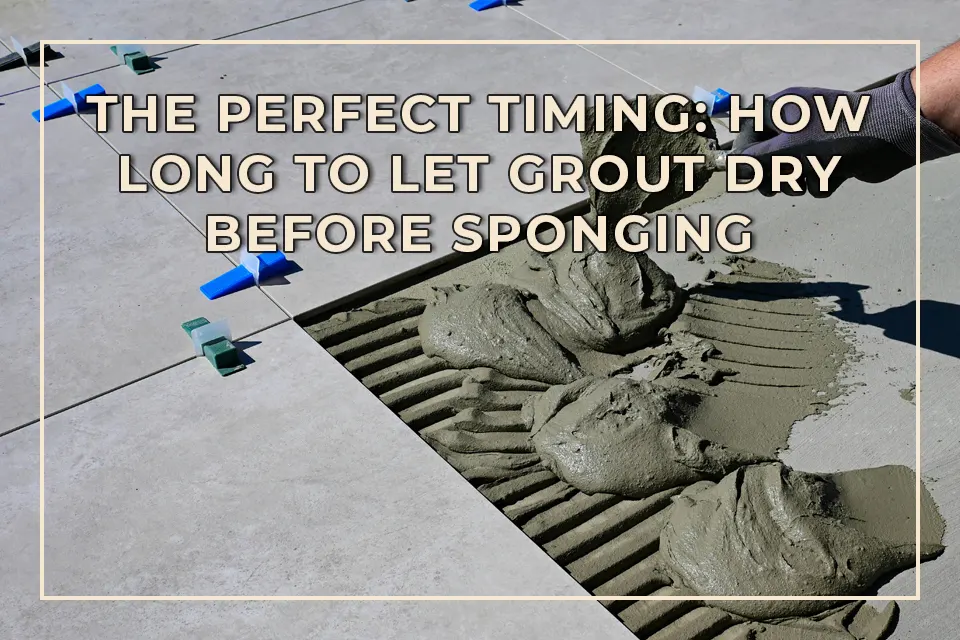
Grout is an essential component in tiled installations, providing both aesthetics and stability. Knowing how long to let grout dry before sponging helps ensure that your tiles remain intact and your grout stays in place. This article explores the importance of letting grout cure properly, its benefits, and a step-by-step guide to achieving optimal results.
Introduction to Grout and Sponging
Grout is a mixture of water, cement, and sand used to fill the gaps between tiles. Once you’ve laid down your tile, flooded the spaces with grout, and wiped excess off the surface, it’s crucial to allow that grout to set before taking the next steps, like sponging. Sponging helps to clean the tile surface and shape the grout lines but can disrupt the grout if done too soon.
Knowing the right time to sponge your grout can make a significant difference in the quality and longevity of your tiling project. In the following sections, we’ll delve deeper into the importance of timing and provide a comprehensive guide on how to achieve the best results with your grout work.
Importance of Allowing Grout to Dry
Why Timing Matters
Allowing your grout to dry sufficiently before sponging is critical for several reasons. If grout is sponged too early, it may lose its integrity, leading to cracking and uneven surfaces. Insufficient drying time can also result in the grout not adhering properly to the tiles, which could endanger the stability of your tiled surface.
Ensuring a Quality Finish
Grout that is allowed to cure properly will not only provide a more polished look but will also be more durable. Sponging premature grout can smear, leading to unsightly sections that might require redoing. Furthermore, inappropriate timing can lead to grout haze on tile surfaces, making them look unclean and uneven.
Understanding Curing Times
Most grout types will require different curing times, so it’s essential to read the manufacturer’s instructions. For standard cement-based grout, you typically need to allow at least 24 hours before sponging, although some situations may require longer.
Benefits of Proper Grout Drying Time
Enhanced Durability
Taking the time to let your grout dry ensures a stronger bond. Good-quality grout is resistant to moisture, stains, and cracks, all of which can compromise your tile installation. Properly dried grout can last for years with minimal maintenance, making your investment worthwhile.
Aesthetic Appeal
What’s more appealing than a beautifully tiled floor or wall? Properly applied grout not only enhances the overall appearance of the installation but also makes it easier to clean. When sponging is done at the right time, the tiles shine, and the grout lines are neat and clean, adding to the beauty of your home.
Time and Cost-Efficiency
While waiting for the grout to dry may seem like a delay, it saves time in the long run. Redoing grout work due to hasty cleaning can lead to extra costs, both in materials and labor.
Step-by-Step Guide: How Long to Let Grout Dry Before Sponging
Initial Clean-Up
Once you’ve applied the grout and removed excess from the tile surfaces, refrain from any further cleaning. This is the first step toward ensuring the grout has ample time to set.
Recommended Drying Time
- Consult Manufacturer Guidelines: Always start by checking the product label for specific drying times.
- General Rule of Thumb: For most cement-based grouts, you should wait at least 24 hours before sponging. If you’ve used an epoxy grout, follow the manufacturer’s instructions, as drying times can vary.
Conducting a Touch Test
After 24 hours, perform a touch test:
- Select a Corner: Choose an inconspicuous area.
- Gently Press: Using a finger, press lightly on the grout.
- Assess the Texture: If it’s still soft or crumbles, let it sit longer.
If hard and set, it’s time to sponge!
The Sponging Process
- Soak Your Sponge: Use a clean sponge and soak it in water, then wring it out.
- Gentle Application: Lightly sponge the grout lines, making sure not to apply too much pressure.
- Rinse and Repeat: Clean your sponge frequently to avoid spreading excess grout.
Expert Tips for Sponging Grout
Opt for a Quality Sponge
A high-quality, natural sea sponge is often the best choice. It’s gentle enough not to disturb softer grout but firm enough to effectively clean.
Work in Small Sections
Tackle one section of your tile at a time. This allows you to manage the drying time better and ensures you don’t miss spots.
Rinse Regularly
Always rinse your sponge in clean water to avoid leaving cloudiness on your tiles. This keeps your sponging efforts effective and pristine.
Avoid Excessive Water
While it’s tempting to use a lot of water, excessive moisture can weaken the grout. Aim to keep your sponge damp, not dripping wet.
Common Mistakes When Sponging Grout
Sponging Too Soon
One of the most common mistakes is attempting to clean the grout too early. This can lead to smearing and an uneven finish, necessitating a redo of the grout work.
Applying Too Much Pressure
Many people instinctively scrub hard when they sponge. However, applying excessive pressure can disrupt the grout and lead to defects.
Ignoring Manufacturer Instructions
Grout products can vary widely in their formulation and curing times. Always consult the packaging for best results.
Over-Wetting the Area
Saturating your tiled area can be detrimental. Excess moisture can seep into the grout and weaken its bond to the tile.
FAQs About Grout Drying and Sponging
How long does grout need to dry before getting wet?
Grout typically needs at least 24 hours to dry, but refer to the manufacturer specifications as drying times can vary.
Can I sponge grout with vinegar or other cleaners?
It’s generally advised to avoid using harsh chemicals or vinegar until the grout has fully cured. Stick to water until the grout is set.
What happens if I sponge too soon?
Sponging too early can lead to a messy finish, crumbling grout, and an overall unstable installation.
How can I tell when the grout is fully cured?
A well-cured grout will feel hard to the touch and not crumble or mark easily when pressed.
Conclusion: Mastering the Art of Grouting
Understanding how long to let grout dry before sponging is essential for a beautiful and long-lasting tile installation. By allowing adequate drying time, you enhance the durability and aesthetics of your grout work while saving time and money in the long run. By following this guide, you can tackle your tiling projects confidently and successfully. Proper timing and techniques can elevate your home’s appearance and ensure your tiled spaces remain intact and stunning for years to come.
DIY Closet
Blast Away the Old: How to Effectively Remove Paint with a Pressure Washer
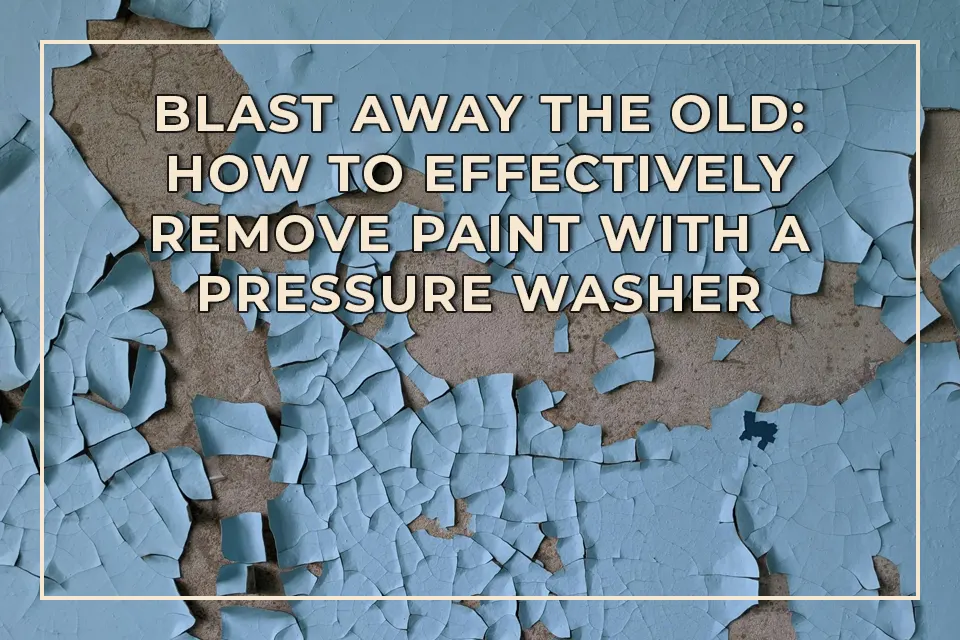
Removing paint from surfaces can be a daunting task, but using a pressure washer can make it easier, faster, and more efficient. This article provides an in-depth understanding of how to effectively remove paint with a pressure washer. Whether you’re prepping for a new paint job, renewing the look of outdoor furniture, or enhancing the curb appeal of your home, this guide will walk you through the process step-by-step.
What Is a Pressure Washer?
A pressure washer is a powerful electric or gas-driven machine that sprays high-pressure water to clean surfaces. The pressure can range anywhere from 1,300 to over 4,000 PSI (pounds per square inch), making it ideal for various cleaning tasks. These machines are popular for cleaning driveways, decks, roofs, and yes, even for removing stubborn paint. By using the right nozzle and technique, a pressure washer can strip away layers of paint without damaging the underlying surface.
The Importance of Removing Paint with a Pressure Washer
Removing old paint is crucial for numerous reasons. Firstly, if you’re planning to repaint, a clean surface ensures better adhesion and a smoother finish. Old, peeling paint can interfere with the new paint and result in an uneven application. Secondly, removing paint can significantly enhance the aesthetic appeal of your home or furniture. Lastly, neglecting to remove old paint can lead to moisture accumulation, contributing to wood rot or mildew. In essence, using a pressure washer to remove paint not only promotes a fresh look but also helps maintain the integrity of your surfaces over time.
Benefits of Using a Pressure Washer for Paint Removal
Using a pressure washer for paint removal comes with numerous advantages:
- Efficiency: Unlike traditional methods like scraping or sanding, pressure washing can strip paint quickly over large areas without excessive manual labor.
- Versatility: A pressure washer can be used on various surfaces, including wood, metal, and masonry, making it an adaptable tool for different projects.
- Eco-friendly: When done correctly, using a pressure washer can minimize the need for harsh chemicals, which is better for the environment.
- Moisture control: A pressure washer can help remove debris and grime that attracts moisture, reducing the risk of mold and rot.
- Cost-effective: Investing in a pressure washer can save you money on professional services and help you maintain your property over time.
Step-by-Step Guide on Removing Paint with a Pressure Washer
Step 1: Gather Your Materials
Before you start, it’s essential to have the right tools and materials ready. Here’s what you’ll need:
- Pressure washer: Choose one with adjustable pressure settings; generally, a PSI of 2,000 to 3,000 is sufficient for paint removal.
- Nozzles: Use a rotating or 15-degree nozzle for effective paint removal.
- Safety gear: Goggles, gloves, and a mask are crucial to protect yourself from paint chips and debris.
- Scraper or wire brush: This can help remove any stubborn paint spots after pressure washing.
- Drop cloths or tarps: To protect surrounding areas, especially when dealing with lead paint.
Step 2: Prepare Your Surface
Preparation is vital for successful paint removal. Clear the area of any furniture, plants, or loose items. Lay down drop cloths to protect any items that cannot be moved. If you’re working on a vertical surface, consider placing a tarp at the bottom to catch falling debris. Inspect the surface for any loose paint chips that can be scraped off manually.
Step 3: Adjust the Pressure Washer Settings
Configuring the settings is crucial for effective paint removal without damaging the underlying material. For wood surfaces, a lower PSI (around 1,200 to 2,000) is generally sufficient. For harder surfaces like concrete or metal, you can increase the PSI.
Attach the correct nozzle, preferably one that allows for a concentrated spray. Ensure the pressure washer’s detergent tank is filled if you plan to use a cleaning solution (which can enhance the effectiveness).
Step 4: Test a Small Area
Before diving in fully, test your pressure washer on a small, inconspicuous area to gauge the effectiveness and adjust the pressure as necessary. This step allows you to identify the amount of force needed to remove paint without causing damage.
Step 5: Begin Pressure Washing
Start from the top and work your way down. Maintain a distance of about 12 to 18 inches from the surface to avoid causing damage. Use smooth, consistent strokes and keep the nozzle moving to prevent concentrating the spray on one area. This technique helps strip the paint more evenly without gouging or damaging the surface.
Step 6: Inspect and Repeat if Necessary
After washing, inspect the surface for remaining paint. If needed, repeat the pressure washing in areas with stubborn paint and feel free to use a scraper or wire brush on particularly tough spots.
Step 7: Clean Up
When the paint is fully removed, take the time to clean up the surrounding area. Remove drop cloths and dispose of paint debris responsibly, ensuring you follow local regulations on hazardous waste if applicable.
Tips for Effective Paint Removal with a Pressure Washer
- Use the right angle: Hold the nozzle at a 45-degree angle to the surface to help lift the paint effectively.
- Move in sections: Work methodically in small sections to ensure you don’t miss spots.
- Keep a steady flow: Maintain a consistent distance and allow the pressure washer to do the work; do not press too hard.
- Choose the right day: Windy days may blow around paint chips and debris, affecting cleanup. Opt for a calm, dry day if possible.
Common Mistakes to Avoid When Removing Paint with a Pressure Washer
- Using too high a PSI: Higher pressures can damage surfaces, especially softer materials like wood.
- Neglecting safety: Failing to wear protective gear can lead to injuries from flying debris.
- Not preparing the area: Skipping surface prep can lead to messier results and complicate the cleanup process.
- Forgetting to check for lead paint: If you suspect lead-based paint, stop and consult a professional for proper removal methods.
- Pressure washing wet surfaces: Ensure the surface is dry before applying pressure to effectively strip the paint.
FAQs About Removing Paint with a Pressure Washer
Can I use a pressure washer to remove paint from brick?
Yes, a pressure washer can effectively remove paint from brick, but be cautious. Use a wide nozzle and lower pressure to prevent damaging the brick.
Is this method safe for wood siding?
Yes, as long as you stick to lower pressures and maintain the correct angle. Always test a small area first.
Do I need special cleaning solutions for stubborn paint?
While water alone can often do the trick, using a pressure washer detergent specifically designed for paint removal can enhance results.
Will I need to sand after pressure washing?
In some cases, sanding may be necessary to achieve a smooth finish, especially if the pressure washing leaves behind splinters or rough patches.
Conclusion
Removing paint with a pressure washer is an effective and efficient method that can save you time and money while rejuvenating your surfaces. By following the proper steps, taking the right safety precautions, and avoiding common pitfalls, you can achieve a clean, paint-free surface ready for a fresh coat. Whether you’re a homeowner engaged in a DIY project or a professional contractor, mastering the art of paint removal with a pressure washer will prove invaluable. So gather your tools, prepare your workspace, and enjoy the satisfaction of a job well done!
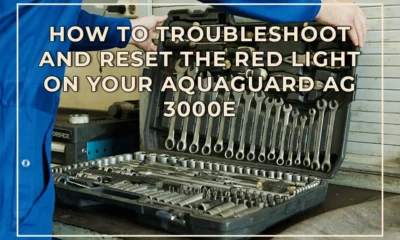
 DIY Closet2 years ago
DIY Closet2 years agoHow to troubleshoot and reset the red light on your Aquaguard AG 3000E

 DIY Closet2 years ago
DIY Closet2 years agoHow to Install a Drop-In Sink Without Clips: A Step-by-Step Guide

 Bug Fixing1 year ago
Bug Fixing1 year agoUnderstanding the Cost of Furnace Collector Box Replacement: What to Expect

 DIY Closet2 years ago
DIY Closet2 years agoPergola Design: Understanding the Maximum Span for 6×6 Beams

 DIY Closet2 years ago
DIY Closet2 years agoThe Best Nails for Luan: A Comprehensive Guide

 Bug Fixing2 years ago
Bug Fixing2 years agoPigtail vs Daisy Chain Outlets: Which is Better for Your Home?

 DIY Closet2 years ago
DIY Closet2 years agoHow to Build a Free Standing 6×6 Post Swing Set: A Step-by-Step Guide

 DIY Closet2 years ago
DIY Closet2 years agoUnderstanding the Benefits of a 400 Amp Meter Base with Two 200 Amp Disconnects






